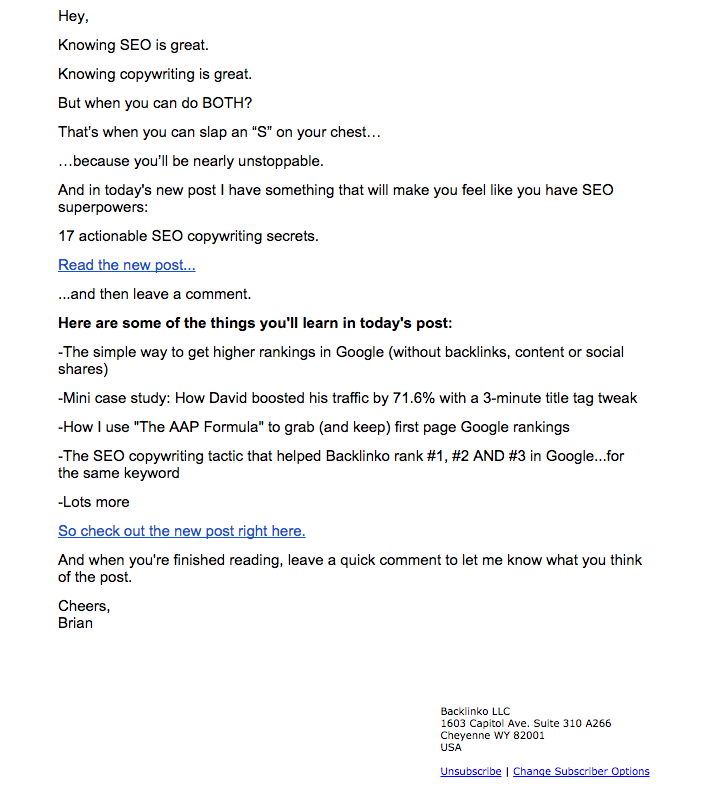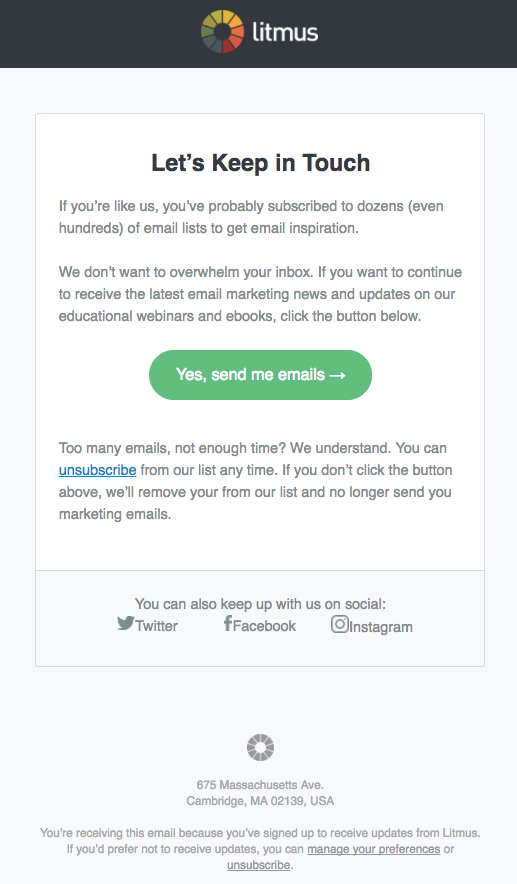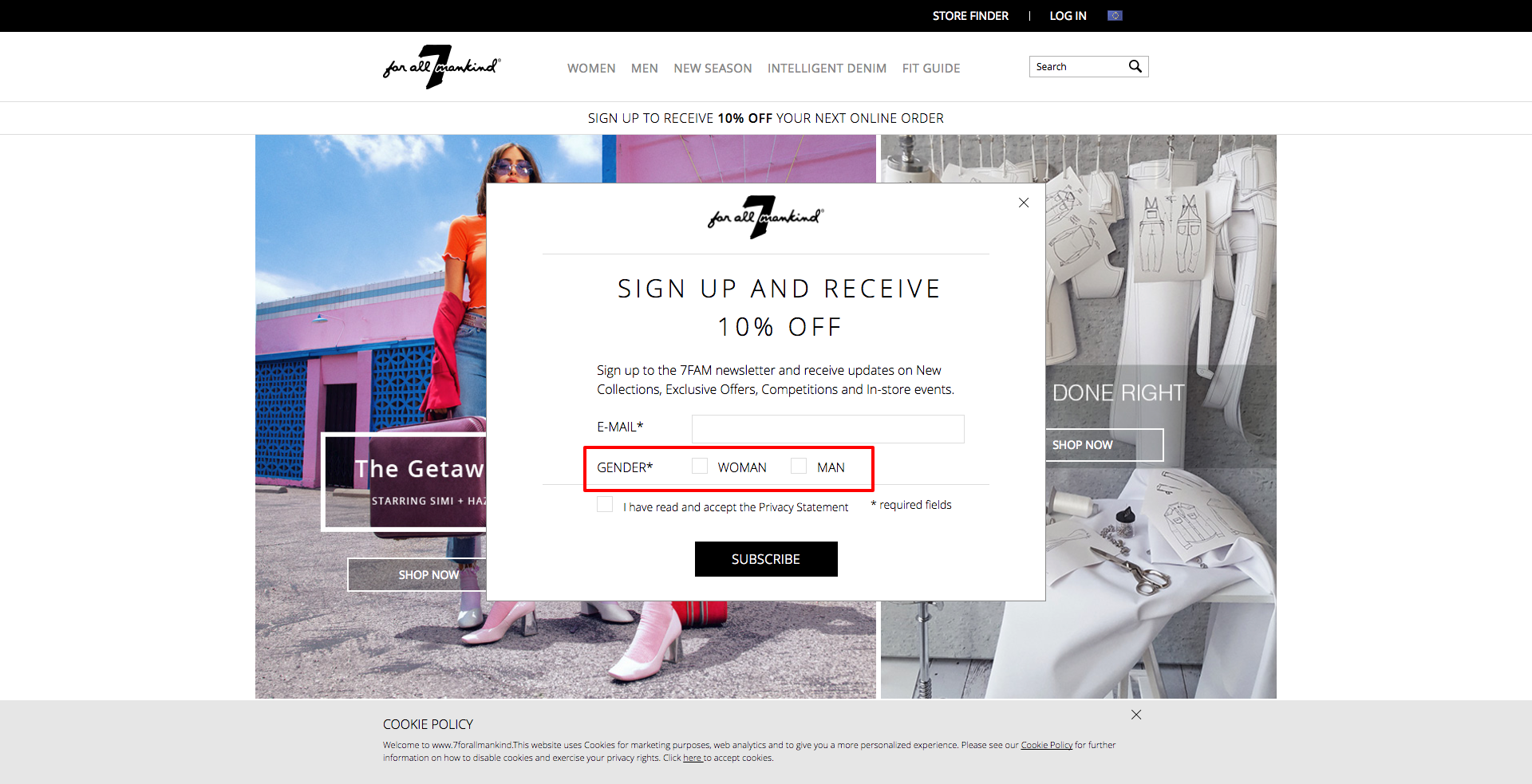

It’s easy to get wrapped up in the potential of email marketing.
After all, three-quarters of companies agree that email offers “good” to “excellent” ROI according to a survey by Econsultancy.
But, that doesn’t mean you should flood your customers’ inboxes with daily promotional emails in the hopes that a fraction of them will click through.
As a matter of fact, 78% of consumers unsubscribe from email lists because they were receiving too many emails from that brand.
That’s why it’s important to find a happy medium that respects the privacy of your customers, while still driving more engagement for your business. However, that is easier said than done.
So, how many emails should you be sending to your customers?
Unfortunately, the answer isn’t simple. There is no one-size-fits-all solution because it will depend on the nature of your business.
Also, you may find that different groups of contacts in your list have varying preferences and tolerance levels for promotional emails. You might need to use segmentation in these cases to separate these groups and send them different emails altogether.
The goal of effective email marketing is to send the right emails to the right customers at the right frequency. To achieve this, you have to have the right strategy though.
So once you create your next email campaign — be sure to ask yourself these 3 questions before you hit the “send” button!
1. What value do my customers receive from this email?
Never send an email if you have nothing to say.
If you want your customers to continue opening your emails, you only need to follow one golden rule: Don’t waste their time.
By sending an email to customers that doesn’t give them any value, you are taking up time that could be spent doing something of value for their business.
If that happens, they are going to be much less likely to trust the value of your content the next time you send an email.
So, what do I mean by value?
There are two main types of value that you can provide in an email:
- Relevant content – Blog posts, news articles, product updates, etc.
- Targeted promotion – Discount codes or product suggestions
However, marketers tend to have a narrow view in the value of email. Instead of focusing on the value that customers get from your emails, some marketers only focus on what they are getting out of the deal.
This usually leads to emails that just promote the latest blog article they wrote or some broad promotional discount with a weak call to action.
Customers don’t want to read emails that have nothing to do with them or that do not interest them.
They are constantly being bombarded with emails, so their available attention span is limited. That is why it’s so important to be as relevant as possible so you don’t waste the little opportunity that you have.
Tips to ensure that you have value-driven email campaigns
1. Be selective with your email content
Whether you’re sending a promotional email or a newsletter, the content of your emails matter.
The products or content that you choose to include in your emails will determine how likely your readers are to engage with the email. The more relevant and interesting the content of your emails is, the more likely they will be to keep opening and reading.
That means you should avoid sending a newsletter that just has a list of your latest articles. You should only send the best articles that have the most potential for adding value to the reader’s experience.
Similarly, don’t send promotional emails out that only feature random products that nobody buys. Instead, you should try to follow a theme (e.g. seasonal items) to make the offers in your email cohesive and attractive to readers.
Basically, the rule of thumb is: Only include the cream of the crop in your emails. Leave out anything else.
Or, as Antoine de Saint-Exupéry famously put it:
Perfection is achieved, not when there is nothing more to add, but when there is nothing left to take away.
2. Add a personal touch
Emails is not just a catalog of links for readers to stare blankly at and wonder which one (if any) sounds interesting. It is its own medium with which you can communicate clear value to your readers and continue to earn their trust.
For example, a newsletter can introduce some of the ideas or benefits that a reader will get from clicking through to the linked article.
Take a look at Backlinko’s most recent content promotion email I received:


Although the email is not flashy and it doesn’t contain tons of articles, it does a few things very well:
- Uses a more relaxed and natural tone to draw readers in
- Clearly communicates the value of the linked content in a relevant way
- Further entices users to click through by encouraging them to comment after reading
2. Do I have permission to send this email?
Sending an email to a list of contacts that has been purchased or borrowed is always a bad idea.
Email marketing is not a channel for prospecting, but rather it is a channel for building loyalty with people who are known to you.
The exciting potential of email marketing can lead some people to skip a few steps of the process. The most common mistake is buying a list of contacts.
The problem with buying an email list is that these contacts have no idea who you are. That can lead to a few major problems:
- Your emails will have low engagement
- You will have a high SPAM complaint rate
- You will get an inordinate amount of unsubscribes
- You’re going to make a lot of people annoyed or upset by intruding on their inbox
All of these things will hurt your sender reputation, which means your emails will be less likely to show up in the inbox the next time you send as well.
Tips to ensure that you’re following proper email procedures
1. Make sure your contacts are opt-in or double opt-in
If you plan on doing email marketing by the book (and we suggest that you do!), you need to have an email list that is 100% opt-in or double opt-in.
What does this mean?
- Opt-in means that your contacts explicitly gave you their consent to email them by signing up for your list (usually through a subscription form).
- Double opt-in is similar to opt-in, except there is an added step. After signing up, each contact receives an automated email that asks them to “confirm” his/her subscription (typically by clicking a link in the email). This protects you from getting bad email engagement metrics from fake or misspelled email addresses.
2. Always allow contacts to opt-out if they want to
Even if someone gives you their permission to send them emails, that doesn’t mean they will always want to receive your content.
People change their minds. Often.
So you should always make sure that you’re following best practices for keeping a clean email list.
In particular, you should always give your contacts an easy way to “opt-out” if they no longer want to receive your emails. Having a clear “unsubscribe” link can prevent people from getting upset if they change their mind about receiving your emails.
Plus, there is no point in keeping around people who aren’t interested in what you’re offering.
If you have unengaged users, it’s actually better if they are not in your list. That is because they drag down your email engagement metrics, which can hurt your deliverability in the long run.
In addition to having a clear unsubscribe option in your emails, it’s a good idea to send an automated email to unengaged users and ask them to “re-opt-in.”
This gives them the chance to unsubscribe if they want to, or remind them that you’re still there and re-engage with them.


3. Am I sending this email to the right contacts?
Segment your contacts to better target their interests and needs
Now that you’ve got a 100% opt-in contact list, it’s time to start thinking about who actually makes up that list.
Different contacts have different reasons for signing up for your newsletter, and not every contact is going to have the same interests or needs.
For example, some contacts might like a product or service that you offer, whereas some are more interested in learning from your content without actually making a purchase (at least not yet!).
Even within these groups, there might be smaller segments as well.
An easy demonstration would be an e-commerce brand that sells to both men and women. You wouldn’t want to send promotional emails about menswear to contacts who have only purchased womenswear before, right?
That is why email list segmentation is so important!
Tips to ensure that you are targeting the right contacts
1. Collect certain segmentation attributes at signup
If you really want to get granular in your email marketing strategy, it’s important to consider segmentation attributes as early as possible.
One way you can get a leg up on segmentation is collecting some attributes upfront about your subscribers.


In the example above, the e-commerce store asks for gender preference to better segment product promotions.
The same strategy can follows for any type of email list. If you are a blogger with a newsletter, ask subscribers when they sign up which subjects interest them most.
Getting this information early will make your life much easier down the road.
2. Further segment contacts based on their behavior
Although segmenting contacts by demographics and static attributes is a good start, it’s not enough if you want a truly successful email marketing strategy.
Within the segments you have already created, there are likely even smaller groups of people with more targeted interests.
For example, an e-commerce store might want to segment customers based on the categories of products that they purchase on top of the demographic segments that already exist. This would make product updates or recommendations much more relevant.
Using an automation tool like Sendinblue, you can easily create dynamic lists that are updated automatically based on user behavior.
And there you have it!
If you ask yourself these three questions before sending your email campaigns, you will be able to get a lot more value out of your email campaign strategy. Plus, you’ll be much more able to provide value to your contacts.
So, be sure to add these to your pre-send checklist — your readers will thank you.
Do you have any other last minute sanity checks that you perform before sending your campaigns? Let us know in the comments below!
 Deutsch
Deutsch





















Comments
Thank you for another informative web site.
Where else may I get that kind of information written in such
an ideal means? I have a undertaking that I am simply now operating on,
and I’ve been on the look out for such info.18852
Thanks for your kind words! You can find many more articles that discuss the best practices of email marketing on our blog — we post new articles every week! 🙂